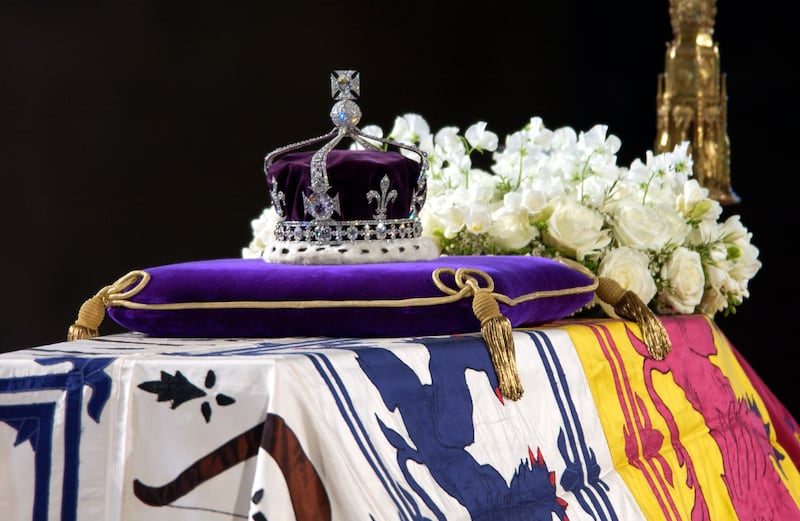India has reiterated its resolve to seek the return of the fabled Koh-i-noor diamond from Britain, which it claims was duplicitously appropriated by the colonial government in the mid-19th century.
A recent parliamentary committee report called for diplomatic and legal recourse to retrieve the Koh-i-noor, a diamond embedded in the Queen Mother’s crown, which is on display at the Tower of London.
India’s foreign office told the committee, without elaborating, that “all efforts” were being made to bring the Koh-i-noor back and that it was hopeful of an “amicable outcome” regarding the diamond’s return.
Since India’s independence from Britain in 1947, the Koh-i-noor has intermittently been on the margins of simmering diplomatic discontent between New Delhi and London, as the former has periodically asked for its restoration.
RM Block
Successive UK prime ministers and other British leaders, have refused India’s requests, with David Cameron categorically declaring on his New Delhi visit in 2010 that the Koh-i-noor would remain in England.
“What tends to happen with these questions [of repatriating plundered artefacts], is that if you say yes to one, then you would suddenly find the British Museum empty,” he said, referring to tens of thousands of foreign artefacts on display there from numerous former colonies.
Nevertheless, these demands by India resurfaced after Queen Elizabeth II’s death in September, in the belief that England’s new monarch, Charles III, known for his relatively liberal views, might be more sympathetic to appeals.
The 105.6 carat oval-shaped diamond, was pared down from its original 191.05 carats, nearly two centuries ago to suit British styles.
Mined in Kollur in southern India some time between the 12th and 14th centuries, the Koh-i-noor changed ownership multiple times over centuries, being owned by kings, maharajahs, sultans and emirs in modern day India and Pakistan and in Iran and Afghanistan.
According to British historian Bamber Gascoigne, Babar, the founder of the Mughal dynasty that ruled India in the 16th and 17th centuries, had calculated that the Koh-i-noor’s cost price could provide food to the entire world for 2½.
Over the centuries, the diamond endured a series of bloodstained and treachery-ridden adventures, before being “presented” in 1849 by Maharaja Dalip Singh, the 10-year-old ruler of the Sikh empire, to a senior British official after a military defeat.
According to some contemporary accounts, the official John Lawrence – later India’s Viceroy – forgot about the diamond, leaving it in his waistcoat pocket in his tent for almost six weeks, before his valet chanced upon it.

The Koh-i-noor was handed over to Queen Victoria and featured in the 1851 Great Exhibition in London, before ending up in the Tower of London as part of the Royal Jewels. Its last public appearance was in the Queen Mother’s crown during her funeral ceremony in 2002.
Folklore, however, has it that the Koh-i-noor is “bloodied” and has visited misfortune upon whoever possessed it.
Consequently, many in India argue that the British would be better off returning the diamond and ending their economic and other ill fortunes.
[ Napoleon’s stolen masterpieces: The plunder that formed the LouvreOpens in new window ]















